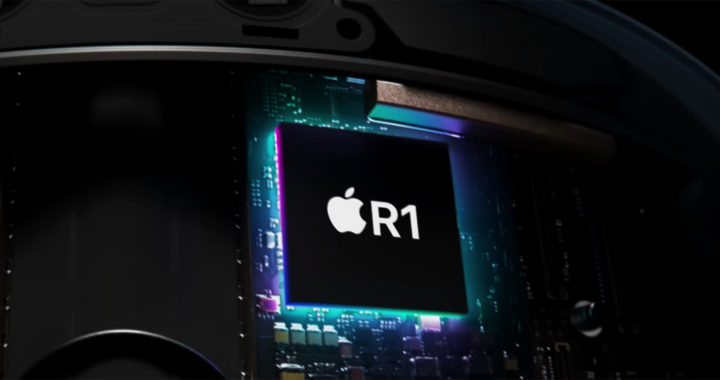The Apple R1 chip is a new Apple Silicon designed and developed for the Apple Vision Pro. It is not the main processor of the device nor does it provide central processing and general graphics processing capabilities. The Apple M2 system-on-a-chip handles all of these processing requirements through its main CPU and integrated GPU alongside AI acceleration via the Neural Engine. The R1 chip is a dedicated coprocessor for handling data obtained from various sensors. Processing these sensor data are crucial in enabling the Apple Vision Pro to render and deliver a mixed-reality environment to its user.
A Look Into the Specifications and Capabilities of the Apple R1 Chip
Specifications
The exact technical specifications of the Apple R1 chip are still not available to the public. Accessible information would reveal that Apple has outsourced Taiwan Semiconductor Manufacturing Company or TSMC to produce this chip. This hardware is fundamentally manufactured using the existing 5nm process technology of TSMC. This means that it is a transistor-dense semiconductor device.
It is important to underscore the fact that this chip is a custom-designed co-processor for handling data obtained from the various sensors of the Apple Vision Pro. It is useless on its own. The dual-chip system of the first-generation mixed reality headset from Apple translates to the fact that the R1 chip works in unison with the M2 chip.
The Apple Vision Pro has a slew of sensors. These include 12 cameras, which include cameras for the TrueDepth system and 4 eye-tracking cameras, 2 accelerometers and 2 gyroscopes for head tracking, 5 infrared-firing sensors for tracking hand gestures, a LiDAR sensor for three-dimensional mapping, and 6 microphones.
Sensors convert or digitize whatever they are sensing into digital data input. The Apple R1 chip takes in the input data for real-time processing to produce the output data that shape the mixed-reality environment. This chip is essentially a digital signal processor. It also has an integrated 1-gigabit dynamic RAM or DRAM to support high-speed processing.
Capabilities
The Apple Vision Pro uses an input system based on eye gestures, hand gestures or hand movements, and voice commands of the user. This system controls the user interface of the mixed-reality environment. It also uses input data from the sensors to merge the augmented reality environment with the virtual reality environment.
Nevertheless, to ensure a smooth user experience, the headset must capture and process of these input data from sensors in real-time. This represents the collective capabilities of the Apple R1 chip. Remember that it is a digital signal processor. Lags can cause motion sickness because of the delays between physical movements and visual feedback.
The chip specifically processes input data with a timeframe of 12 milliseconds. This is about 8 times faster than the blink of a human eye. The lag-free or low-latency processing ensures a comfortable experience while a user is immersed in the mixed reality environment. The following are the specific capabilities of this chip:
• Narrow-Focus Coprocessor: The Apple R1 chip is a narrow-focus coprocessor that works as a digital signal processor. Integrating this in the Apple Vision Pro offloads computationally intensive operations from the Apple M2 chips. It allows the M2 to run the operating system and its subsystems, apps, graphical rendering processes, memory management, and machine learning algorithms.
• Digital Signal Processing: It is important to reiterate the fact that the domains of this chip are head and eye tracking, hand gestures, audio input, real-time three-dimensional mapping, and other visual inputs. It governs all of the sensors founds in the Apple Vision Pro. The chip is specifically tasked to process all input data received from the various sensors of the mixed reality headset in real time.
• Enabling Computer Vision: Computer vision is a subfield of artificial intelligence concerned with deriving meaningful information from digital images, videos, and other visual inputs. The chip fundamentally equips the Apple Vision Pro with this capability by processing different visual input data from relevant sensors to produce output data that are important in creating the mixed reality environment.
• Low Latency Performance: The Apple R1 chip is designed and fabricated using advanced chipmaking technologies. The specific 5nm process technology has allowed it to pack denser transistors in a smaller footprint for better processing power and efficient power consumption. These capabilities result in a low latency or lag-free user experience. It is also capable of a 12-millisecond photon-to-photon latency.
